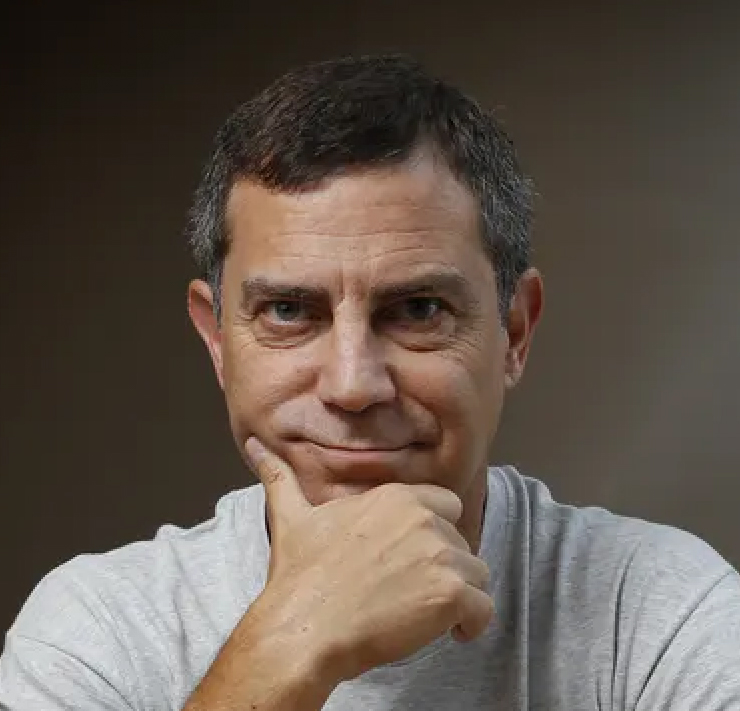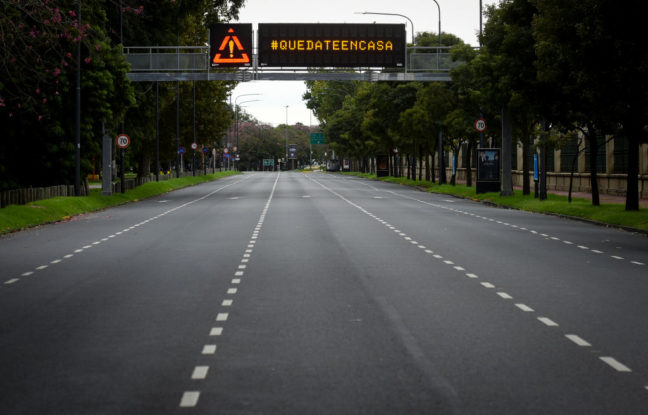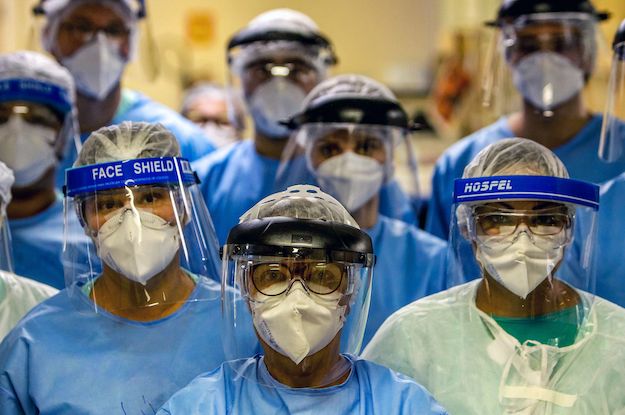The pandemic is a global crisis, but policy responses have been largely national. Governments can be classified according to their priorities: China has privileged the state; Europe, society; and the United States, at least initially, the market. In the words of the sociologist Federico Zinni, they have given precedence to national security, public health and the economy respectively.
In Latin America, the approach has varied widely. Argentina, for example, reacted as a European country, while Paraguay and Peru went even farther. Chile and Colombia followed a similar, albeit more flexible or inconsistent strategy. Mexico and Brazil emulated Trump in open denial first, and in reluctant backtracking later.
However, these casual comparisons can be somewhat misleading. The decision to shut down the economy is tough enough for developed economies that can fund countercyclical whatever-it-takes fiscal packages at zero interest rates. For developing countries with prohibitively high financing costs and a low prevalence of a formal salaried workforce, it is close to impossible. More generally, with scarce fiscal resources and a majority of precarious — informal or independent — workers, the same containment strategy may yield drastically different results.
How do you keep self-employed and informal workers at home if their subsistence depends on them leaving home? How do you enforce the lockdown in a slum, patrol porous borders, or distribute food and medicine in massive quantities? The answer is: imperfectly, selectively, and temporarily. Lockdowns must be time limited and segmented in their implementation, or they will be broken. The images of endless queues at banks or supermarkets in the poorest districts of Argentina are a sobering warning in this regard.
How, when and for how long should a lockdown be imposed in Latin America? We can think of three ways of approaching this question.
What would happen if we extended the lockdown one more day? We would lose so many dollars, but we would save so many lives.
The first approach compares how many lives would be lost by reducing the time of the lockdown (and saturating the health system) against how much income would be lost by extending it. More simply: What would happen if we extended the lockdown one more day? We would lose so many dollars, but we would save so many lives. If we assume that each additional day costs proportionally more dollars and saves proportionately fewer lives (in economic jargon, marginally increasing costs and marginally decreasing dividends from the shutdown), at some point the economic cost will exceed the worth in saved lives; it is then that we should end the lockdown.
This way of thinking has several problems. To start with, there are pieces of critical information missing: how persistent the immunity is (a key question behind the UK’s initial herd immunity approach) or what the chances are that incomplete or ineffective immunization opens the door for yet another wave of contagion (and another lockdown) in the near future.
Let us make things easier. Let us assume that immunization is persistent (that is, no significant reinfection exists) and exceeds 60% of the population, thus inhibiting a new outbreak. Let us also ignore the uncertainty about the true value of crucial parameters like contagion ratio. Even so, the exercise of comparing lives and income suffers from some serious conceptual drawbacks.
By now, the reader has probably figured out the main one: This is not a simple decision between health and the economy, or between lives and income. Indeed, there are lives at the end of the two options: An economic depression leads to poverty and under-financed public sectors. And poverty and lack of public investment, in their own oblique ways, also take lives.
The second approach to the question, then, tries to take into account the effect of poverty on the casualty count. This effect is very difficult to quantify in practice, among other reasons, because poverty has dynamic consequences: We know that the life expectancy of a poor child is, on average, shorter; we also know that children from poor households will likely also be poor – social mobility, in Latin America as in much of the world, is generally low – and their life expectancy will therefore be shorter. We can simulate a model with made-up parameters to get some illusion of evidence, but let us not kid ourselves: With so many factors and uncertainties involved in the estimation, any workable forecast on this front will be little more than a leap of faith.
One step further, the third approach incorporates the effect of economic losses on public investment. How many people die every day on roads, trains, dark streets, and slums due to rotten infrastructure and uninhabitable habitats? More to the point: How many die from inadequate medical care in the public health system? Is there an estimate of how many lives can be saved by the next million dollars spent in public goods and services?
So far, the choice has been reduced to one between lives and… lives. It implies the heroic assumption that we accept to change one life for another – and that we can estimate the death toll directly linked to the decision on the pandemic strategy. If this is complex as it is, imagine now the complete version: one in which, in addition to the costs in terms of deaths, we weigh in the effects of the decision on the well-being of the living!
Alas, not everything is economy.
Trolleyology
In the trolley problem, a well-known thought experiment, a tram formation runs out of control. On its way, there are five people tied to the rails. Fortunately, it is possible to press a button that will direct the tram on a different route, in which there is “only” one person tied without a chance to escape the collision. Should we press the button?
For the utilitarian decision maker, the choice is simple: Five lives are worth more than one. Press the button. In real life — or, rather, in the labs where this experiment is often conducted — actual people prefer not to kill “by their own hand” — and let the machine do it by its own.
Now let us use this format to “model” the lockdown decision. The president, after being presented with the discussion at the beginning — with all the mentioned caveats and uncertainties — by his council of experts, has to choose whether to relax the lockdown and increase (“by his own hand”) the immediate death count by contagion in exchange for mitigating the economic depression and (potentially) saving many lives (how many?) over a longer period of time (how long?). In a sense, the lockdown is the button and poverty is the tram. And the problem is a moral one, that is, it has no universal solution. Indeed, rather than a problem, which eventually has a solution, it is a dilemma, which has two solutions — neither of which is satisfactory.
The perimeter of reality: Back to Latin America
There are, of course, other objective and very real limits to each president’s choice. It is easy (and justified) to criticize Jair Bolsonaro and Andrés Manuel López Obrador’s reckless responses to the pledge of experts — and of their own policymakers and state governors — to impose some version of a lockdown. However, the question remains: How many weeks of strict social distancing and economic shutdown could Brazil and Mexico tolerate? How much lockdown is it realistic to impose in countries with a high degree of informality and overcrowding, with no fiscal space to fund universal emergency transfers, nor state capacity to contain vulnerable sectors and ensure containment and security in a region with a sad record of military and police excesses? Both the economic and the moral approaches are ultimately subordinated to some basic feasibility conditions.
Among the available options, some Latin American countries have adopted the European approach, the most humane of all — but they lack the resources of Europe, and now face the test of its sustainability. A lockdown imposes a moral dilemma on policy makers and citizens as a whole. Epidemiology, economics and political science allow us to measure, imperfectly, the material costs of each option, but they do not provide an answer.
Context-sensitive rather than radical policy options could contemplate the following possibilities: gradual relaxation of lockdown conditions coupled with massive testing and tracing; selective relaxation of lockdown conditions for designated workers and shop-keepers under strict interaction rules; neighborhood rather than household lockdown; and massive food handouts. All this should be supplemented by a dramatic buildup of sanitary infrastructure and further recruitment of medical staff. A sudden termination of the lockdown would be as unadvisable as a permanent lockdown is unsustainable, but several options in the middle — albeit tough to choose and hard to implement — can and should be considered.
Ultimately, the decision is privately moral and publicly political. Thus, the more transparent and consensual it is, the less damaging it will be to society.
—
Levy Yeyati, an economist, dean of the School of Government of Universidad Torcuato Di Tella, and nonresident senior fellow at The Brookings Institution. Malamud, a political scientist, is a senior research fellow at the Institute of Social Sciences of the University of Lisbon, Portugal.










